Review: Amazon Fire Phone for AT&T
Jul 29, 2014, 3:30 PM by Eric M. Zeman
updated Aug 5, 2014, 8:44 AM
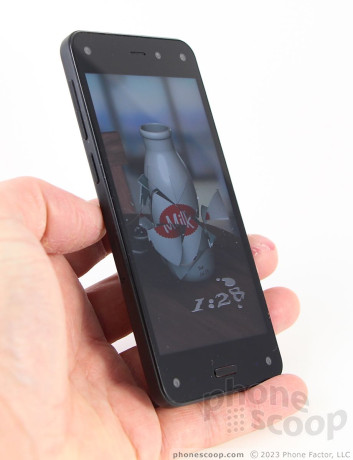
Amazon's Fire Phone is a curious animal. It has a few neat tricks up its sleeves, but the Fire Phone is not for everyone. Phone Scoop's deep dive gives you all the info you need to see if it is the phone for you.
Form
Is It Your Type?
The Amazon Fire Phone is only for two types of people: those who absolutely love Amazon (and, by default, shopping), and those who want something entirely different from Android, iOS, or Windows Phone. If you're not one of these two types, stay away; the Fire Phone is not for you.
Body
The Amazon Fire phone is about the same size and shape as most smartphones with screens measuring near five inches. It's heavy, somewhat blocky, but not wholly unattractive. As far as black slabs go, I've seen much worse. Amazon did manage to make some quizzical design choices, but they are what make the Fire Phone look unique.
The Fire is made of two glass slabs that sandwich a polycarbonate frame. The glass is glossy, the frame is matte. The glass is somewhat slippery and prone to smudging, while the frame's matte finish lends it some grip. The phone feels well made and of high quality. Everything is put together tightly.
The Fire is oblong thanks to hefty bezels above and below the screen. They give the Fire Phone a bit of an odd look. It is narrow enough to easily wrap my hands around, but I wish it weren't quite so chunky. The device should fit into most pockets without issue.
What perhaps stands out most on the Fire Phone's face are four obvious sensors located in the four corners. They're the cameras to aid the Dynamic Perspective user interface (more on that later). There's also a slit in the glass for the earpiece speaker, the standard user-facing camera, and a home button below the screen. The button protrudes from the front surface, making it easy to find. It offers excellent travel and feedback. The front surface is a really busy place. I wish the four Dynamic Perspective sensors were hidden to reduce the design clutter. They also contribute to the phone's interesting proportions.
Thanks to the polycarbonate frame, the Fire has a nasty-feeling rim around both the front and back surfaces. You get double skin-biting action on this bad boy. Granted, the rim is to protect the glass surfaces, but I found it grating to my hand.
Most controls are located along the left edge of the phone. The volume toggle is nearest the top, followed by a dedicated camera/Firefly button, and tray for the SIM card. The buttons are great. They are easy to find, have a pleasing shape, and function perfectly. There's a screen lock/power button on top, and it has the same solid design characteristics. The top also houses a stereo headphone jack and one of the stereo speakers. The other speaker is located on the bottom, as is the microUSB port. The stereo speakers mean you can get good sound when holding the phone sideways.
The back cover is not removable, which means there's no battery swapping. The Fire Phone does not support memory cards, so you're stuck with the internal storage, which thankfully starts at 32 GB.
The Fire Phone's hardware is definitely functional, and almost looks good.
Performance
Screen
Above, I said the Fire Phone is about the same size as other devices that have five-inch screens. The Fire Phone's screen doesn't measure five inches, though; it measures 4.7 inches. It doesn't offer full HD resolution either, as it is limited to 720p. What's striking to me is how much larger the Fire Phone is than the Moto X, which also has a 4.7-inch 720pp screen. The Fire Phone's screen looks decent, but it doesn't quite measure up to today's full-HD displays. Despite that, on-screen elements look crisp enough and pixels are hard to see. Colors look good and viewing angles are excellent. There's no color drop-off or brightness loss when the phone is tilted side to side. Outdoor viewing is quite good. I had no trouble seeing the screen outside in direct sunlight even with fingerprints smeared everywhere. But the same money buys you more real estate and twice as many pixels on today's leading phones.
Signal
The Fire Phone runs just fine on AT&T's LTE 4G network. It performed on par with other devices I've tested around the metro NYC region. It held on to a signal all the time and never lost contact with AT&T. I didn't have any problems connecting calls on the first dial and the phone didn't drop any calls. Data speeds were generally good. I noticed a slight slow down in weak coverage areas, but peaks never matched those of competing devices, such as the Galaxy S5 or G3.
Sound
Phone calls fare well on the Fire. The earpiece produces clean sound that I found easy to hear in all but the noisiest environments. Calls were crackle-free. Only espresso machines and heavy construction equipment overpowered the earpiece when it was set all the way up. Quality and volume both dip a bit when calls are routed to the speakerphone, but not terribly so. I'd say the speakerphone is adequate for holding conversations in any quiet room or office and perhaps in cars. The speakerphone is a wee bit thin sounding and can't quite deliver clean voices. Those with whom I conversed through the Fire said I sounded "fine" and "normal." Ringers and alert tones are not the loudest I've heard, but I was able to hear the phone pretty much all the time in my house. The vibrate alert should get your attention every time it buzzes.
Battery
I'd rate the battery life as below average. Most modern LTE 4G phones are capable of delivering a full day of use, even with large, high-def screens. The Fire consistently conked out at about the 12-hour mark, and sometimes sooner. That means it lasted, on average, from 7AM to 7PM most days with normal use. That's not quite good enough, especially if you plan to head out for the evening after a long day at school or work. The battery issue is compounded by the lack of replacement batteries. I'd suggest you pick up a spare phone charger or battery pack and keep them handy.
Basics
Menus
FireOS is best shown, not told. That's why I created this video for you to watch. It covers all the basics of how the user interface works, including its quirks and qualities. I will, however, attempt to describe it here.
FireOS is based on Android, but not how you've ever seen it before. Amazon created its own version of Android, complete with its own user interface, apps, menus, and settings. Google-made apps, such as Gmail, Maps, and Calendar, are nowhere in sight.
The lock screen offers only the most basic information, which includes the time, and the number of new emails, messages, or calls since last checked, which appear near the top. The clock is often hidden in part of the animated lock screen, and it takes a second to locate. This can be a bit of a hassle. The notifications are so small that I often couldn't tell how many new emails I had unless I brought the phone right up to my eyeballs. There are no shortcuts to the camera or other apps. You can add a password or lock if you want to.
The main home screen consists of a carousel with either your most recently-used or favorite apps. Each app has a dynamic list of stuff underneath it as you scroll back and forth through the carousel. For example, your three most-recent emails or messages appear underneath the email and messaging app icons, respectively, when viewed on the home screen carousel. The carousel items can be adjusted and reordered, but they appear on a dismal gray background that I found depressing (and unchangeable).
There are four icons that appear in a dock below the carousel (phone, messages, email, browser). These are constant. If you grab them and swipe upward you'll reveal the entire app tray. The Fire Phone has a limited number of preinstalled apps because there aren't that many apps for the platform yet. The smartphone basics are here (calendar, maps, clock, gallery, and so on). The apps in the app drawer can be rearranged and added to folders if you want. Press-and-hold to mark any given app for inclusion on the home screen.
The settings tools are really straight-forward, and I like them. The settings are lumped into categories that are spelled out in plain language: Connect to Wi-Fi, See Your Cellular Data Usage, and so on. It really helps speed up customizing the phone and setting it up. Speaking of customization, the phone lets you adjust all the normal stuff, such as ringtones, lockscreen wallpapers, screen brightness, volumes, parental controls, passwords, etc.
If this were the sum of the user interface, I'd call it boring but functional. There's much, much more.
There's a whole bunch of gestures that bring up secondary details to almost every screen and every app. I detailed how the gestures work here. The three basics are snapping the left edge toward you, snapping the right edge toward you, and rotating the top edge downward.
Perhaps the best way to imagine it is to think that every possible screen on the phone is flanked by two off-screen panels. Tilt the right edge toward you to bring the right panel onto the screen, tilt the right edge away from you to send it back. Same for the left side. Rotating the top of the phone toward you brings down a control panel from the top, which provides quick access to radios, brightness, and other similar tools.
To complicate things further, these gestures are all duplicated by swiping on the screen - which I often found to be faster, but not necessarily more reliable. Even worse, after you've tilted one of the panels onto the screen, even more information shows up if you angle the screen further. This info is contextual, such as how many songs are in your music library, but is often hard to read since you're viewing the screen at a pitched angle. It's like ephemeral, ghost info, and you're being dared to read it.
It's a bit of a mess, and far more complicated than it needs to be to present information to Fire Phone owners. I'll give Amazon points for some unique ideas here, but the user interface is not my cup of tea. I prefer the more straight-forward approach taken by Android, iOS, and Windows Phone.
As far as performance goes, I didn't see any problems with the apps, menus, or any part of the system. The Fire Phone runs fine.
Dynamic Perspective
Amazon's Dynamic Perspective idea compounds all the user interface issues. Dynamic Perspective employs the four user-facing sensors on the front of the phone to determine the location of your face and direction of gaze in relation to the screen. It uses this data to generate a 3D look and feel to many elements of the Fire Phone's UI and screens. All the lockscreens, for example, are 3D in their appearance. You can tilt the phone to peer around corners, see past clouds, and discover other animated treasures that are just off-screen when viewed head on. There are several games that ship with the Fire Phone that make good use of Dynamic Perspective. (I like the one with the monkey.)
But Dynamic Perspective is sprinkled throughout the UI. For example, the carousel and app drawer have icons that move and rotate as you tilt the phone. It's most visible on the home screens, and is thankfully absent from many of the apps themselves. It may give some people motion sickness. If you don't like it, the Fire Phone allows users to turn off Dynamic Perspective as a whole, or individual features like tilt, swivel, or peak.
Calls and Contacts
The basic communication apps will feel familiar to most anyone who's used a smartphone in the past. The phone's default screen is whichever one you used last, be that the call log, favorites, dialpad, or voicemail. These are all accessible via tabs at the bottom of the screen. The dialer works as expected. In-call tools include send-to-speaker, mute, open diapad, and add a line. There's no way to send a call to Bluetooth after it is connected. The phone also allows you to forward incoming calls and reply with text messages.
The contact application strongly resembles those of most Android devices. Contacts are displayed in a clean format with attractive drop-shadows. A quick tap of the person's photo brings up their basic contact details, including phone number and shortcut for messaging. You have to press the contact's name to open the full contact card, which contains tons of data and is a snap edit or share.
Messaging
The Fire Phone's text messaging application is clearly built on the foundation laid by Google's text messaging app. It's cleaner looking and has a nice color palette, but the functionality is the same. Messages are laid out in threads with different colored bubbles separating your text from that of your friends. It is quite easy to add pictures or video to messages.
The Fire Phone's keyboard works very well. It supports trace input, so you can drag your finger from letter to letter rather than type out each word if you want. The prediction engine is very good, and often offered perfect suggestions for the next word. It can also handle voice dictation and I found accuracy to be excellent.
The email application supports most types of email accounts, including POP, IMAP, and Exchange. The user interface is spartan, but the clean design is appealing in its own way. Amazon covered the basics, which means you can delete, respond to, or archive messages, as well as move, flag, and label them. Email conversations appear threaded, and images appear quickly. The settings allow you to turn off email threading, block image downloads, and tweak notifications. It's not a bad app and compares favorably to the iOS email app. It falls short of Gmail as experienced on Android devices.
There are no social networking apps preloaded, nor is there any sort of instant messaging client. I was able to find Facebook and Twitter in the Amazon Appstore. I was able to find WhatsApp, but not SnapChat. The Fire can run many Android apps, but not all.
Extras
Media
The Fire is chock full of media apps, but not the ones you're likely used to. Instead of the Google Play Store, you'll find the Amazon Appstore. Amazon has its own music, video, and book-reading apps. Amazon's music selection is just as good as Apple and Google's, and Amazon Instant Video is really, really great. Amazon's media apps are available to regular Android phones and some of them are available to the iPhone. The apps (Kindle, Audiobooks, Newsstand) look and behave on the Fire Phone just as they do on regular Android devices.
One of the key selling points of the Fire Phone is that it hooks into your Amazon Prime account. If you didn't have one before buying the Fire, you'll get a year subscription for free (value $99). Prime gives you online music storage and streaming, and access to Amazon Instant Video's large collection of free, streaming TV shows and movies. Instant Video alone might be worth the $99 for some people. Add to that the benefits you get with your Amazon account (free two-day shipping on amazon.com orders and cheaper one-day shipping for many products) and you have a real deal. I've used Amazon's online music service for years, and all 20,000 of my songs became instantly available as soon as I signed into my account. All of my bookmarked TV series also showed up in Amazon Instant Video. Very nice.
The stereo speakers sound pretty good when viewing movies or when playing music. I like how well the music app integrates with my online library, but downloading songs for offline playback was a bit of a hassle. There's no way to sync songs directly to the Fire Phone through your computer other than via the Android Connector app (which is a horrid piece of software).
There isn't anything advanced, such as a TV remote, but the Fire Phone is supposed to support Miracast and screen mirroring on TVs. I couldn't get Miracast to work, despite the fact that my TV supports it, but I'm not surprised by this at all because Miracast generally doesn't function as it is supposed to. The Fire Phone is supposed to stream seamlessly with the Fire TV, but we don't have one to test with.
Suffice it to say, the Fire Phone is a fine media companion.
Camera
The camera has its own button. A quick press launches the camera. The camera launches fast, and can be opened even when the phone is locked.
The camera user interface is rather simplistic, and that's OK. The viewfinder fills up most of the screen and there are strips down the left and right sides holding the controls and settings. There are controls for the flash, selfie cam, and full settings. It's a pretty standard set-up.
The flash toggles between on, off, and auto. The selfie (front) camera is pretty obvious. The “full” settings are *really* limited. You can turn HDR on or off, set image review on or off, and choose the "Lenticular" or Panorama shooting modes. Don't know what "Lenticular" means? Don't worry, I didn't either. The Lenticular tool takes photos that are similar to a Panorama, but allow you to stitch together a full 360-degree image that users can view by panning the phone around. So it's sort of like Photo Sphere for Android, but not quite the same. The tool is confusing to use and the results are pretty much garbage. That's it, though. There are no other shooting modes or settings. You can't adjust anything else about the camera's behavior.
When the flash is off, the Fire's camera focuses really quickly. It features a burst shooting mode, but its “burst” is rather slow. When the flash is on, focusing takes a lot longer and it's easy to miss shots. The camera is straight-forward and gets the job done, but a few extras (sports mode, portrait, etc.) might have been nice.
Photos
The Fire Phone has a 13-megapixel sensor and it takes decent photos. I had zero expectations and was pleasantly surprised by the results. The camera app itself may lack advanced shooting modes, but the Fire Phone takes good photos, and, in the end, that's far more important than whiz-bang features in the camera app itself.
Focus was generally sharp, white balance generally accurate, and exposure mostly spot-on. I achieved the best results when the flash was turned off. Using the flash, especially indoors, plays havoc with white balance and exposure. I'd say most people who buy the Fire Phone will be pleased with the results they get.
Video
I'd say the same thing of the video camera's capabilities. I was surprised at how good the 1080p HD footage was, and enjoyed the results. Focus and exposure are mostly great, with only white balance causing some goofy results here and there. Most people ought to be happy with the video they capture. Even the sound is good.
Gallery
The gallery app is rather interesting. It's organized in a fairly simple fashion. The photos are arranged in a plain old grid, which is laid out chromologically from most recent photos downward. It makes sense and works. You can tilt the phone toward you or away from you to automatically scroll through the library if you wish (this feature also works in the browser). The left-side panel lets you sort between photos stored on the device, the camera roll, and videos. You can also manage your Cloud Drive account from the left-side panel.
The editing features are beyond crazy and completely make up for the lack of advanced camera features. For starters, the editing screen resembles that of the standard Android gallery app. The editing controls run along the bottom of the screen in a strip that scrolls sideways. The options include: enhance, crop, rotate, red-eye, effects, stickers, text, meme, draw, brightness, contrast, saturation, warmth, whiten, blemish, sharpness, focus, and splash.
When was the last time you saw a smartphone offer a Meme editor out of the box? Really all it does is allow you to add blocky text at the top and bottom of photos, but hey, now you can start your own Twitter or Facebook sensation right from your phone.
I found the editing tools a cinch to figure out and use. You can share photos quite easily through the gallery app with tools that look and function like those on most Android handsets.
Apps
Since the Fire Phone runs a modified version of Android, the selection of apps is fairly decent. Amazon claims to have about Android 185,000 apps in their app store that are compatible with FireOS and the Fire Phone. A lot of the marquee apps that people care about are available (Facebook, Pandora, Twitter, Weather, eBay, Flixster, SoundCloud, Tumblr, Evernote, Vevo, Instagram, Groupon, et al.). The Appstore is fairly simple to use, but I wish it were easier to browse via category, for example.
One nice thing: there's almost no AT&T bloatware. I don't know if AT&T was too lazy to recode its apps for the Fire Phone or if Amazon forbade it. The only AT&T app is the MyAT&T for managing your account. That works for me!
Bluetooth
The Fire supports Bluetooth 3.0 and a handful of the most common profiles, such as stereo Bluetooth, phone book access, and object push. I didn't have any trouble connecting the Fire to a range of devices thanks to the dead-simple Bluetooth menu. Calls sent to a mono headset sounded decent, but not great. Calls sounded better through my car's hands-free system. I wasn't all that impressed with the quality of music sent to my favorite Bluetooth speaker. The Fire doesn't support the aptX profile, which is best for music lovers. For a media-centric phone, that's a shame.
Browser
The Fire Phone has its own browser, called Silk. I couldn't find any third-party browsers, such as Chrome or Opera, in the Appstore. Silk functions just fine. It features an address bar at the top and back/forward buttons that hover at the bottom-left corner of the screen. The browser supports multiple tabs, which are accessible through a separate button that hovers at the bottom-right corner. Advanced tools are limited to sharing pages, bookmarking them, saving them, or searching through them. There is no private browsing mode. Silk renders web sites cleanly and quickly. I like that it maintains an on-going list of the sites you've visited most often.
Clock
I don't like the clock. Amazon probably thought it was being creative by hiding the time (in white, digital form) in the lock screen animations and 3D screens. It's definitely creative. But it's not at all useful. The clock just isn't as visible as it needs to be, and it sometimes moves around depending on the lock screen animation you've selected. Just give me the time, Amazon.

Firefly
Firefly is Amazon's product and media search tool. It borrows heavily from other apps that so similar things. First up is the product scanner.
Firefly uses the camera to capture images of stuff and then searches for items that match what's in front of you. If you're in a supermarket and see some Cheerios, long-press the camera button to launch Firefly and take a shot of the box. Firefly will search for Cheerios and then provide results on where you can buy Cheerios online, including, of course, Amazon. The app also displays reviews of the item, as well as general information and provides links to the manufacturer web site if/when available.
I tried Firefly with a wide range of household items and found that it worked only about two-thirds of the time. It successfully identified a box of crayons and a smartphone, but misidentified a beer can coozie as a greeting card. It was able to correctly identify my Stormtrooper helmet, Gran Turismo 5, and a Sony PS3 controller. It was able to tell me I was holding an Energizer battery, but couldn't give me the right size. It was able to tell me I was looking at a Pioneer receiver, but had no idea what model. I could go on.
Firefly also acts like Shazam and can recognize music, TV shows, and movies. You have to tell it when to listen to music and when to listen for TV shows/movies (it must search a different database. Accurracy when listening to music was quite good. It missed only one song in 10. Of course, Firefly provides a link to the MP3 on Amazon's Music Store, as well as a link to the CD, vinyl, and other editions if available from Amazon.com. As for TV/movies, it did well there, too. I found it to be most accurate when theTV was loud and there was no other noise. It was even able to tell me what show I was watching even during a commercial. The TV search results include links to purchase the content (if available), as well as links to other information sources, such as IMDB.
None of these features by themselves is novel, but it is nice to see them packaged together in one app. While the music and TV seaching performed well, Amazon needs to bone up on the product recognition.
Amazon's prices were never all that competitive with what was actually in my hand, but I suppose there are times when it is more convenient to buy something online and have it shipped home when you're not able to carry it around all day. Like Dynamic Perspective, Firefly is a bit of a gimmick, though it certainly has its uses.
GPS/Maps
The maps app is certainly functional, though not quite as feature rich as Google Maps or HERE Maps. The Fire Phone's GPS radio is quite accurate and pinpointed me within the Maps app down to about 25 feet in mere seconds. The map allows you to select from normal and satellite views, and see the traffic. Traffic is shown on roads in the standard green-yellow-red for good, slow, stopped traffic. I was able to route myself from Point A to Point B with no problem. The app supports car, mass transit, and walking directions in order to help everyone get around.
The one cool feature is Dynamic Perspective. In select cities, you can tilt the phone around to peer around buildings and structures. The concrete jungle of Manhattan looks pretty cool when you're tilting the buildings around, and the Fire Phone map app gives you a reasonable idea of what the structures really look like. Apple Maps' 3D feature is far more amazing thanks to the colorful images, and Google's 3D maps is faster at rendering the buildings.
Wrap-Up
Amazon tried some interesting things with the Fire Phone. Some of them work well and others do not.
The hardware is quite decent and generally offers a good experience. I dislike the appearance of the four user-facing sensors, but they may not bother other people. The quality of the materials puts some plastic phones to shame. The screen is good, the device connects to AT&T's network well, and it offers passable phone quality. The battery life is a bit questionable.
The operating system is unique and familiar at the same time. Dynamic Perspective is a neat parlour trick, but utterly useless. To me, it doesn't add any real value to the Fire Phone. The too-many gestures needed to interact with Dynamic Perspective and FireOS are repetitive and unnecessary. Firefly, the other whiz-bang feature, is basically an avenue through which to buy stuff from Amazon, also a gimmick.
On the plus side, I think Amazon got many of the basics right. The phone, messaging, and email apps are all solid, as is the browser. The camera is functional and takes good pictures. Some social networks are available as third-party apps and sharing is generally easy. Amazon totally killed it as far as media is concerned with its Prime tie-in and music/video catalogs. App selection is limited, but Amazon claims more are coming soon.
Would I recommend the Fire Phone? Not to most people. The device costs $200 on ctontract, which is about the same as the iPhone 5s, Galaxy S5, HTC One, and other leading-class devices that offer better screens, better battery life, better cameras, and better app selection. The Fire Phone is a niche device for people who truly love Amazon and its online services. If you count yourself as one of those people, go ahead and give the Fire Phone a shot. If you're not, stick to the more mainstream hardware, which offers many of the Fire Phone's features and then some.
Comments
Something new?
But anyway, I'll try this one cuz' I wanna try the dynamic perspective 😁


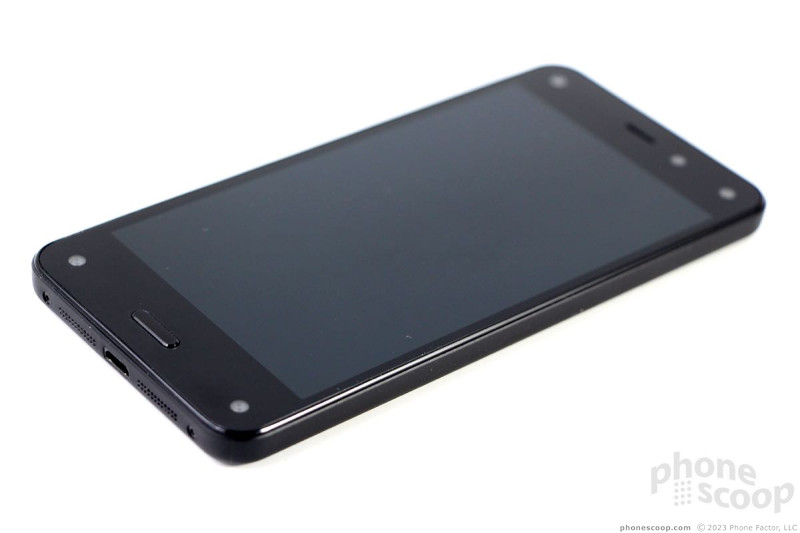














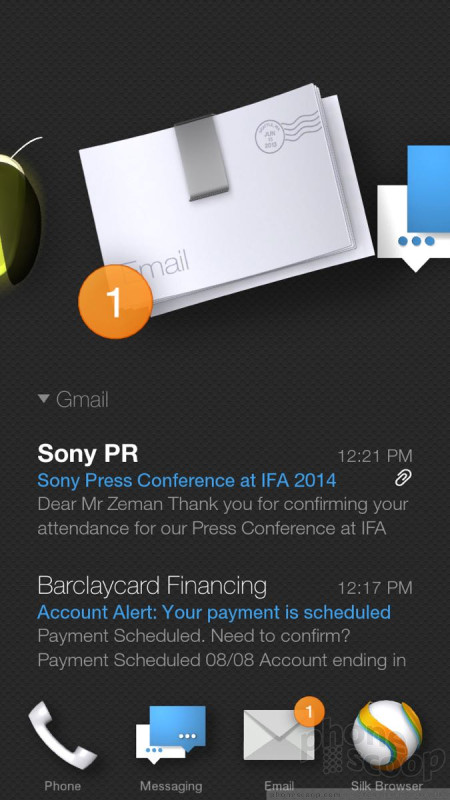


















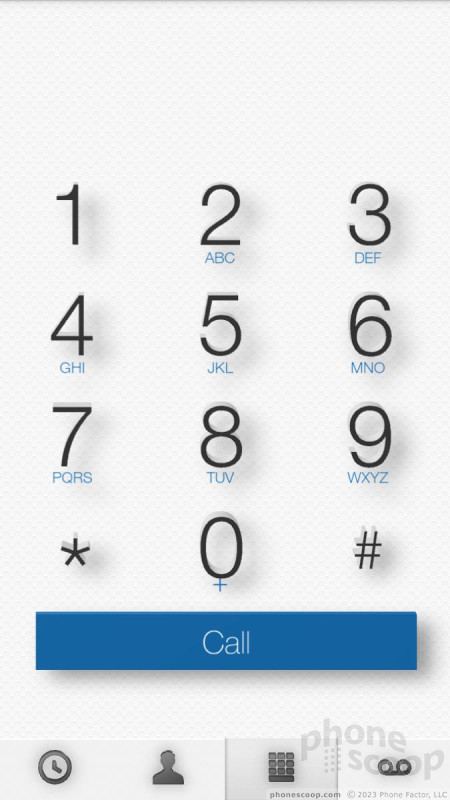




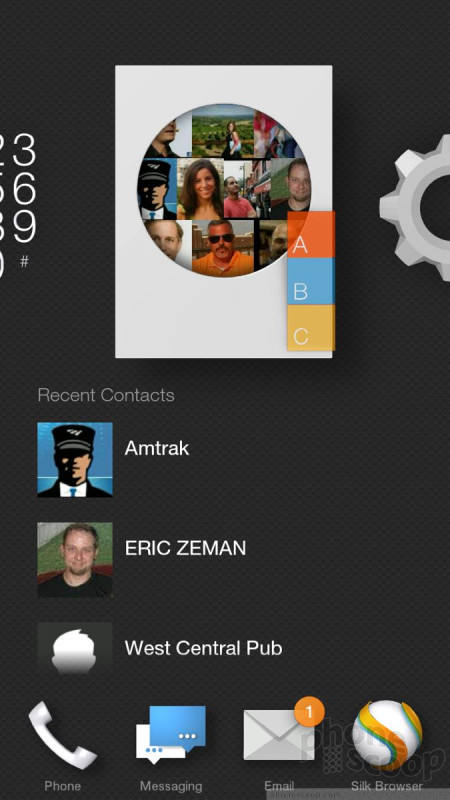






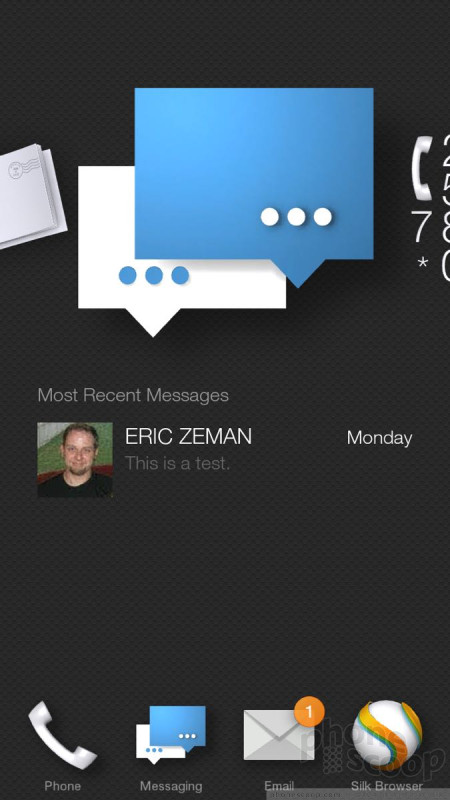









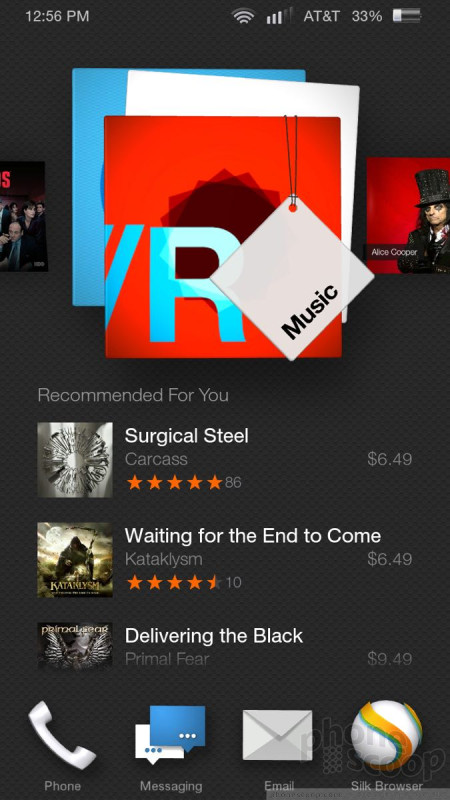








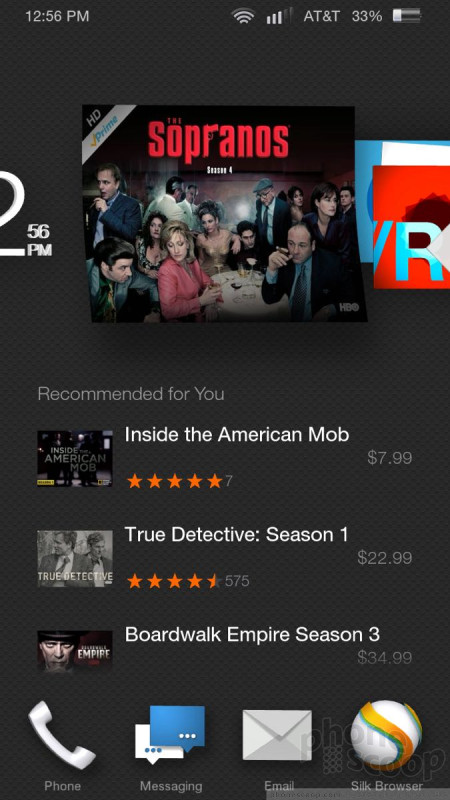







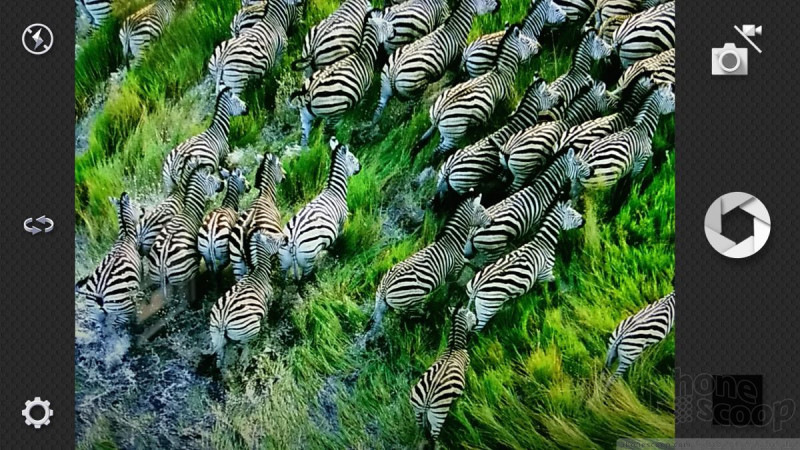




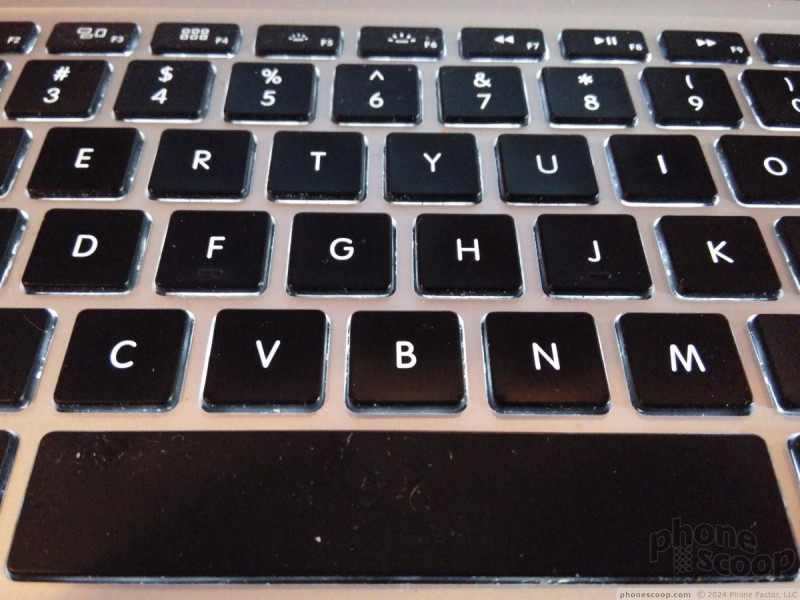
















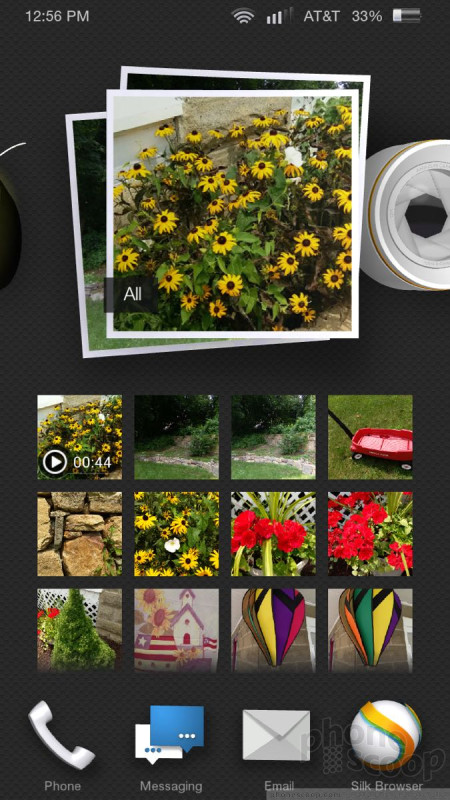


















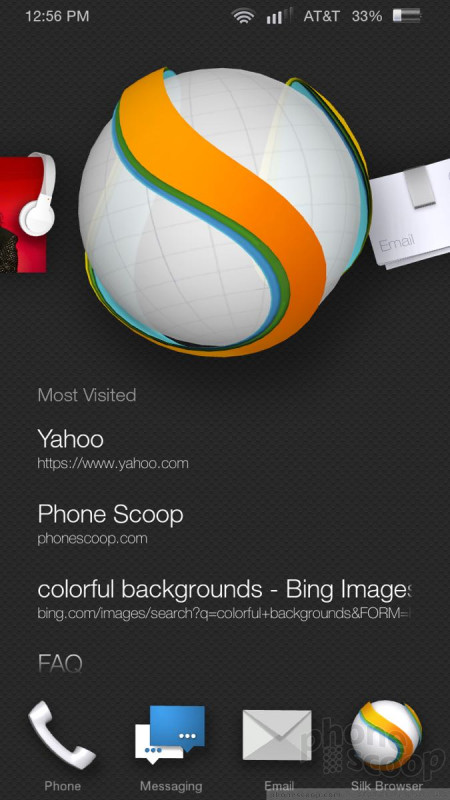





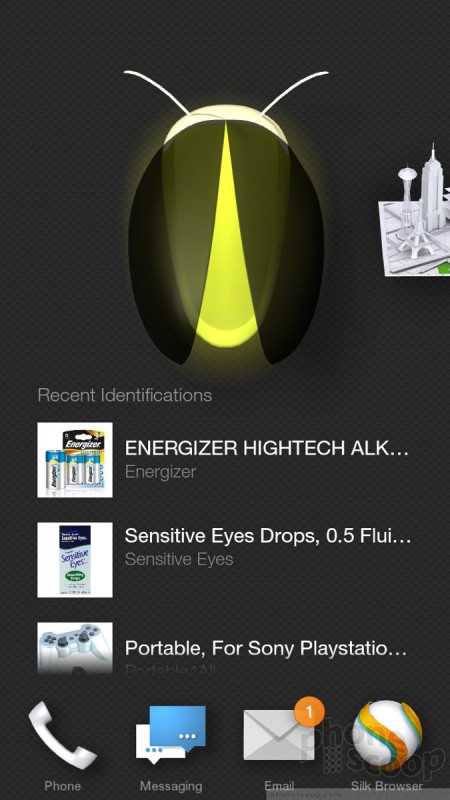






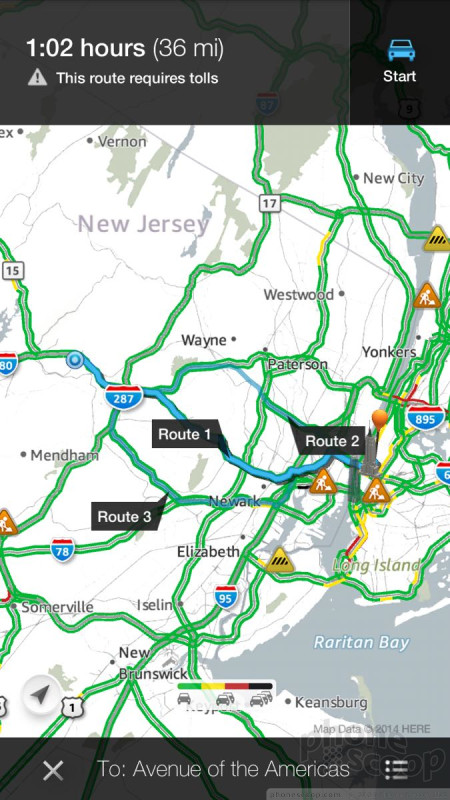





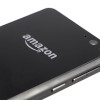 Video Tour: Amazon Fire Phone
Video Tour: Amazon Fire Phone
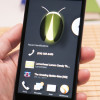 Hands On with Amazon's Fire Phone for AT&T
Hands On with Amazon's Fire Phone for AT&T
 Liveblog: Amazon's New Mobile Play
Liveblog: Amazon's New Mobile Play
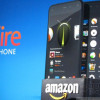 Amazon Intros Fire Phone
Amazon Intros Fire Phone
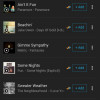 Amazon Brings Prime Music to Smartphones
Amazon Brings Prime Music to Smartphones
 Amazon Fire
Amazon Fire









